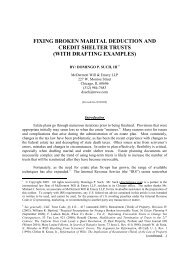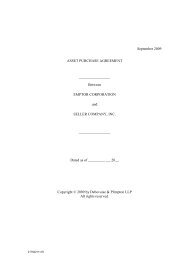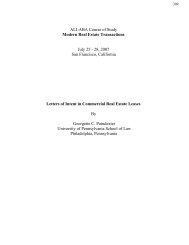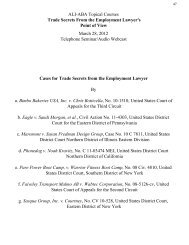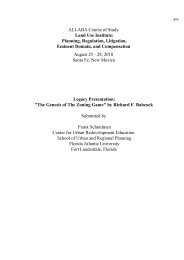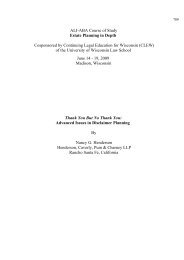Creating and Representing EB-5 Regional Centers - ALI CLE
Creating and Representing EB-5 Regional Centers - ALI CLE
Creating and Representing EB-5 Regional Centers - ALI CLE
- No tags were found...
Create successful ePaper yourself
Turn your PDF publications into a flip-book with our unique Google optimized e-Paper software.
50<strong>Creating</strong> <strong>and</strong> <strong>Representing</strong> <strong>EB</strong>-5 <strong>Regional</strong> <strong>Centers</strong>By H. Ronald Klasko 1IntroductionThe <strong>EB</strong>-5 program was implemented in 1990 as a program to provide legal permanent residence status toinvestors who invest $500,000 or $1 million (depending on the geographical area) in a business thatcreates employment for 10 full-time U.S. citizen or permanent resident employees. 2 For various reasons,especially that fact that most businesses do not commence early operations with 10 full-time employees,Congress created the regional center program in 1993. A regional center is “any economic unit, public orprivate, which is involved with the promotion of economic growth, including export sales, improvedregional productivity, job creation, <strong>and</strong> increased domestic capital investment.” 3 Today, regional centerpooled <strong>EB</strong>-5 investments constitute over 90 percent of the total <strong>EB</strong>-5 petitions.From the investor’s point of view, the major advantage of a regional center investment is that theinvestor’s petition can be approved as long as the regional center project creates 10 direct or indirect jobs.This allows regional centers to use economic forecasting models to project indirect <strong>and</strong> inducedemployment created as a result of the new project. The main disadvantage of a regional center for aninvestor is that the investment amount is being put toward a project that the investor does not control <strong>and</strong>generally the investor will not be working in the project in which he invests. In addition, he will bepaying the regional center developer a sum of money (often between $30,000 <strong>and</strong> $70,000) to cover thedeveloper’s expenses <strong>and</strong> profit.1 H. Ronald Klasko (Ron) (rklasko@klaskolaw.com) is one of the country's leading lawyers representing developers<strong>and</strong> investors in <strong>EB</strong>-5 cases. He has been the Chair of the <strong>EB</strong>-5 Committee of the American Immigration LawyersAssociation for the past 3 years. In that capacity, he leads the advocacy efforts of immigration attorneys around theworld relating to improving <strong>EB</strong>-5 legislation, regulations <strong>and</strong> adjudications. Ron represents two of the three largestregional centers <strong>and</strong> is a designated preferred attorney for filing <strong>EB</strong>-5 petitions for many of the approved regionalcenters. He also regularly works with developers creating new regional centers <strong>and</strong> with investors investing inregional center <strong>and</strong> individual projects. Ron is a founding member of Klasko, Rulon, Stock & Seltzer, LLP <strong>and</strong>serves as its Managing Partner. He has practiced immigration law exclusively for over three decades. Under hisleadership, the firm has been chosen with four other firms by Chambers Global as the top U.S. business immigrationlaw firms. Ron, himself, was named as one of the top two most respected corporate immigration lawyers in theworld for the last five years by the International Who's Who of Business Lawyers.2 8 U.S.C. § 203(b)(5).3 8 CFR § 204.6(e).




